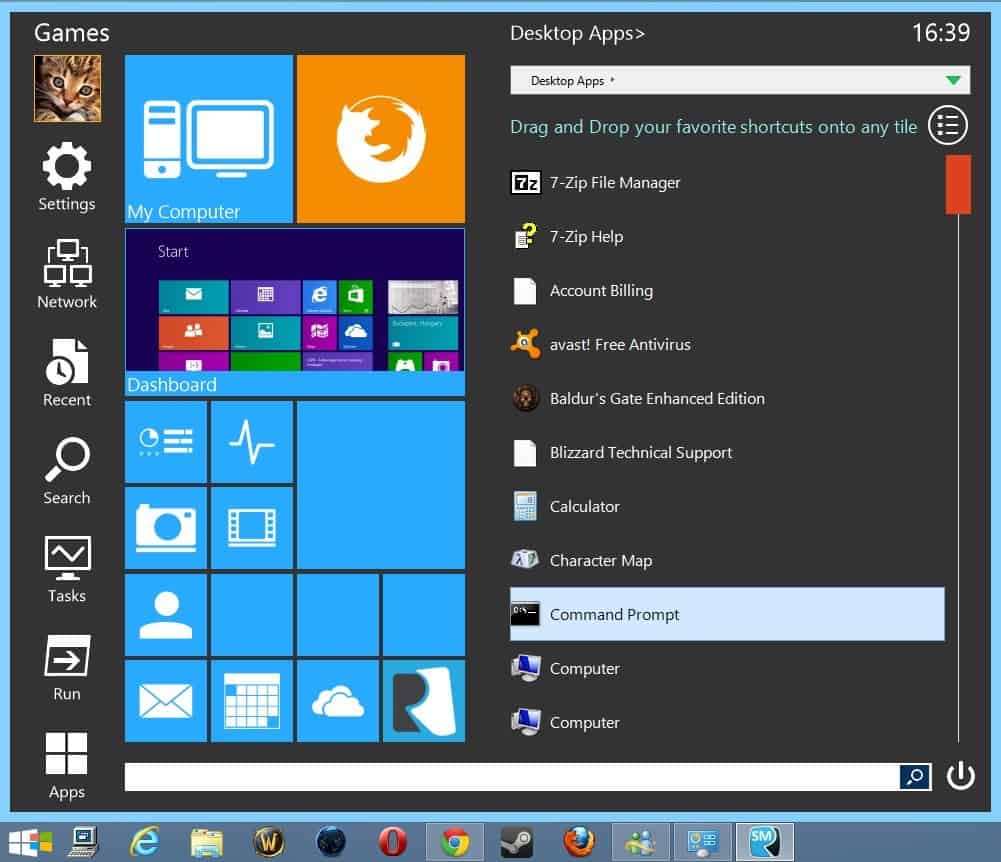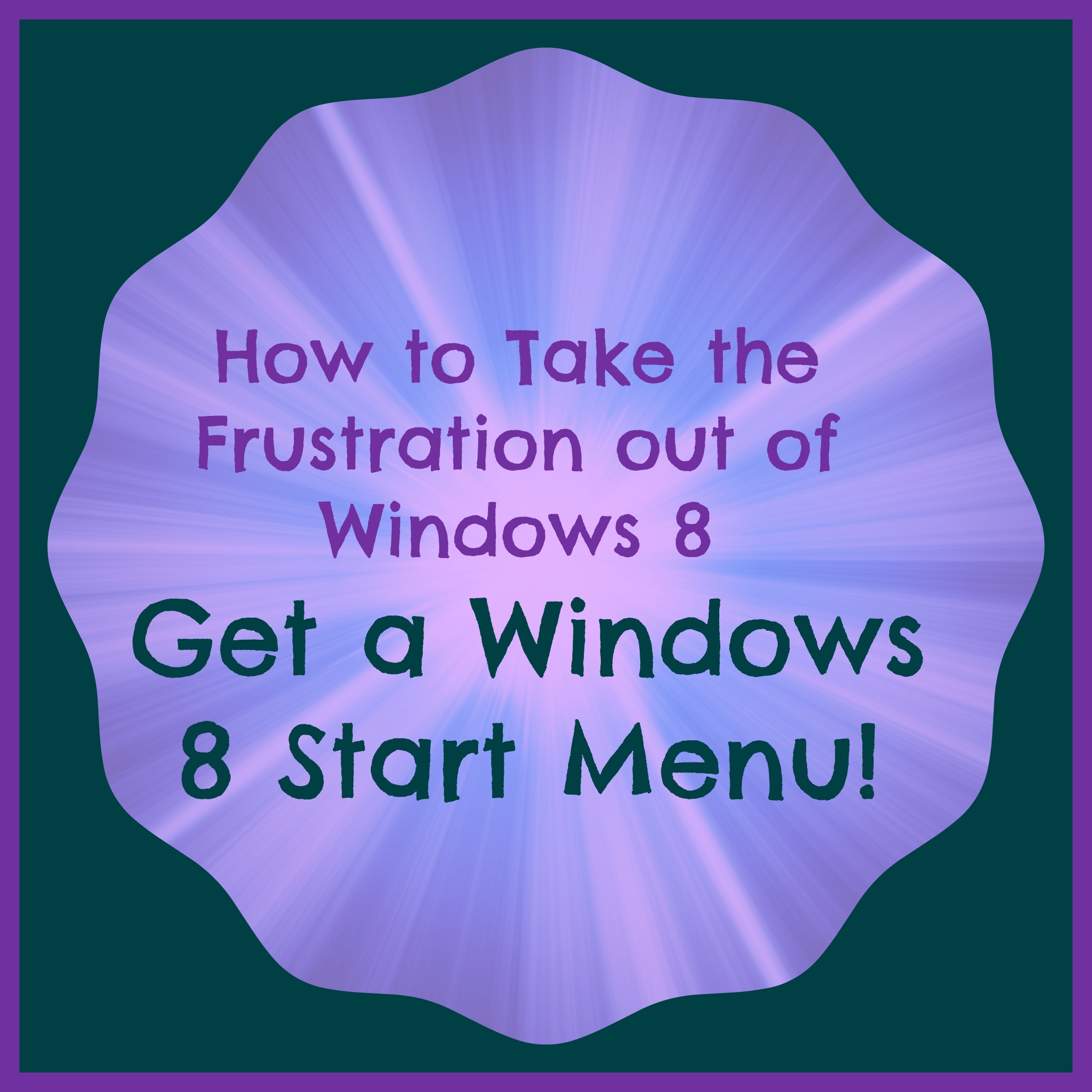

- #WINDOWS 8 START MENU SHORTCUT WINDOWS 8#
- #WINDOWS 8 START MENU SHORTCUT WINDOWS 7#
- #WINDOWS 8 START MENU SHORTCUT WINDOWS#

#WINDOWS 8 START MENU SHORTCUT WINDOWS#
This will create a simple system shutdown shortcut on your desktop, double clicking which will forcibly close all running programs and shut down Windows 8.Ģ. Right click on an empty area in the desktop, choose “New>Shortcut” and enter the value as C:\windows\system32\shutdown /s /t 0. To create dedicated shutdown and restart buttons in Windows 8, follow these steps:ġ.
#WINDOWS 8 START MENU SHORTCUT WINDOWS 8#
Pretty easy but if you are like me and unaware of the keyboard shortcut in the first place, it will seem impossible to find this option.Ĭreate A Custom Shutdown And Restart Button In Windows 8 Metro Start Screen There you will see a power button, left click it once and you are shown options to shutdown, hibernate or restart your computer. Press Win + I and Windows 8 will open up the system menu from the right side of the screenĢ.

Here are some easy ways to create Shutdown and Restart buttons on Windows 8 Metro start screen, The Default Shutdown Button in Windows 8 – Powerīefore you create a custom restart and shutdown button or tile in Windows 8, let me tell you the default way.ġ. But at the same time, I thought that there must be an easy way to shutdown the computer, other than hitting Alt + F4, choosing the dropdown menu and choose restart, which is very daunting. I knew that Windows 8 won’t have the start menu and I was prepared for the change. When I finished installing Windows 8 on my laptop, I could not figure out where the restart and shutdown button has disappeared. Honestly, I never use keyboard shortcuts myself because I am habituated in using the “Start” menu to shutdown or restart my computer. Of course there is a keyboard shortcut for that but novice users often do not remember these shortcuts and want easy ways to turn off the computer or restart it, using only their mouse. Windows 8 has no classic start menu and thus, there is no easy way to shutdown or restart your computer the classical way. Method 3: Via the Program Files folderĪ final approach would be to simply browse to the OUTLOOK.EXE file in its installation directory and use the right click option there to create a Desktop shortcut.Add Shutdown and Restart Buttons On Windows 8 Metro Start Screen When Outlook isn't closed, you can still achieve the same by first right clicking on the icon and from the list that pops up, right click on Outlook 2013 (or whatever your version is) while holding the SHIFT button and choose: Send To-> Desktop (create shortcut)Ĭreating a shortcut for a running application (click on image to enlarge)Ĭreating a shortcut for a pinned application (click on image to enlarge)Īs mentioned before, this will also work for every other application of course and you don't actually have to pin it to your Taskbar first if you have the application running already. Then hold the SHIFT button and choose: Send To-> Desktop (create shortcut) Once you have Outlook pinned to your Taskbar, make sure that Outlook is closed. To pin Outlook to your Taskbar, right click on Outlook in the Start Menu and choose: Pin to Taskbar. Having Outlook pinned to your Taskbar might be something you want too anyway. Right click on an empty space on your Task Bar and choose Toolbars-> New toolbar… and point it to the following location:Ĭ:\ProgramData\Microsoft\Windows\Start Menu\Programs\ Method 2: Pin to Taskbar firstĪnother way to go would be to pin Outlook to your Taskbar first. You can copy and paste this shortcut to your Desktop or right click on the shortcut and choose: Send To-> Desktop (create shortcut)Įxtra Tip: You can use this location to create a Start Menu toolbar in Windows 8 as well. This will open a File Explorer window with the actual location of the Start Menu shortcut. Maybe the easiest way to go, would be to do a search for Outlook in the Start Menu, right click on it and from the context menu that pops up choose: Open File Location. Note: This method can be used for any application, not just Outlook. In Windows 8, you’ll have to do a bit more tricky right clicking.
#WINDOWS 8 START MENU SHORTCUT WINDOWS 7#
In Windows 7 and previous, you’d simply right click the Outlook shortcut in your Start Menu and choose: Send To-> Desktop (create shortcut) I’ve got a new installation of Outlook on Windows 8 and I’d like to place a shortcut for Outlook on my Desktop.Ĭreating a Desktop shortcut for Outlook in Windows 8 is indeed not that straightforward.


 0 kommentar(er)
0 kommentar(er)
